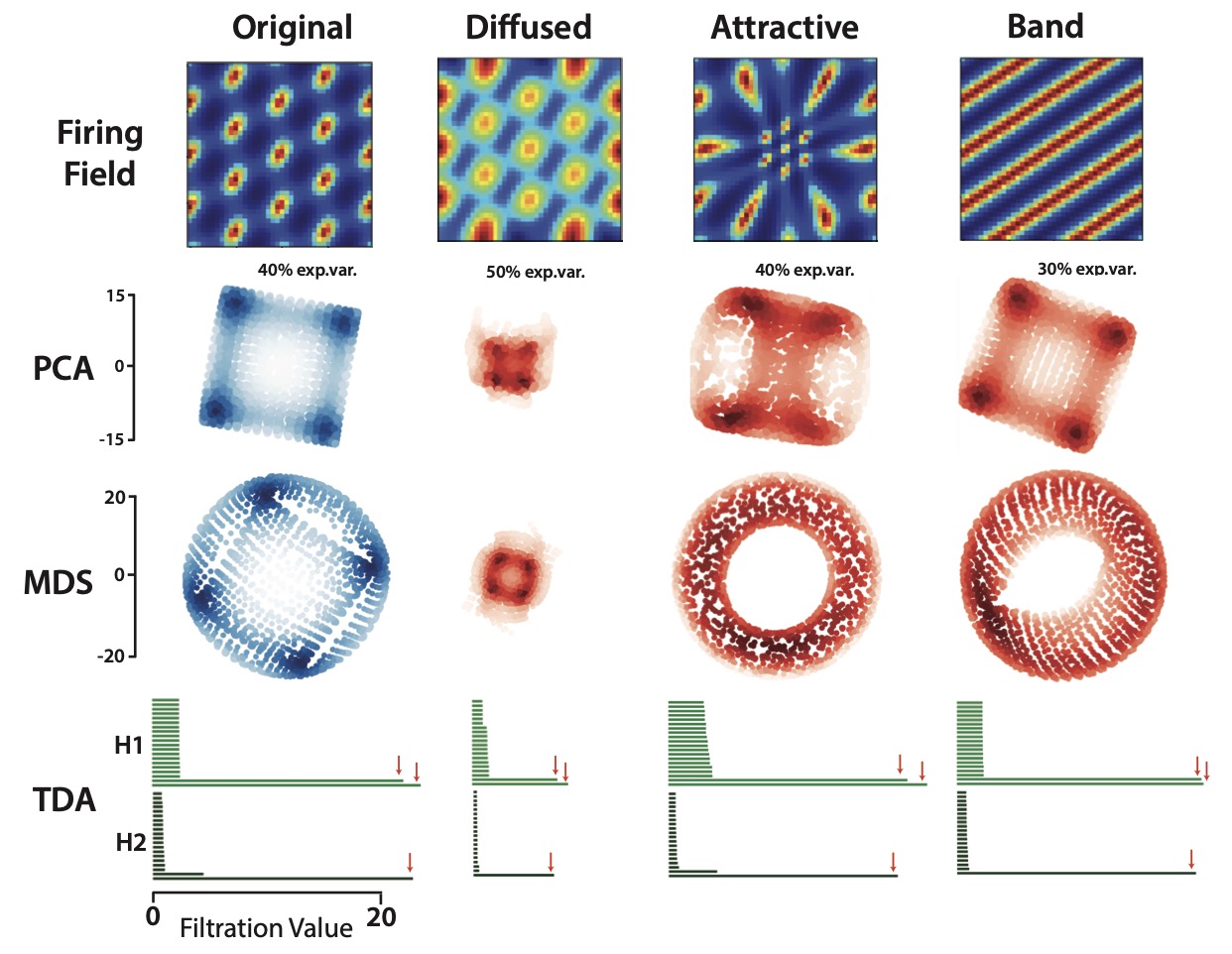For the first time, scientists can record the activity of millions of neurons at once, offering an unprecedented window into the brain. These recordings reveal a surprising shift in perspective: memory, perception and behavior emerge not from single neurons, but from groups of neurons working together. Yet, despite this technological leap, our analytical methods lag behind, leaving the organizing principles of cognition elusive.
We propose Geometric Intelligence as a unifying framework to elucidate the main principles of the brain.

Deforming synthetic grid cells changes manifold geometry but preserves its toroidal topology.
Spacial Navigation
How does the brain construct representations of the world?
We investigate how neural circuits enable spatial and cognitive navigation through distributed population codes, in which coordinated activity patterns give rise to internal maps that anchor our sense of position, context, and goal.
- Distributed navigation systems span multiple brain regions, where population dynamics integrate sensory, contextual, and memory signals into unified spatial and abstract representations.
- Within these systems, grid and place cells provide a foundation for mapping both physical and conceptual spaces, linking local activity to global structure.
By modeling these dynamics with dynamic latent-variable frameworks (Dinc et al., 2025), we reveal how neural populations jointly encode spatial and abstract maps. These models reproduce experimental findings and generate testable predictions, advancing a unified account of how the brain constructs and maintains coherent representations of the environments – real or imagined – that we move through.
Paper Spotlight:
Acosta, F., Dinc, F., Redman, W., Madhav, M., Klindt, D., Miolane, N. "Global Distortions from Local Rewards: Neural Coding Strategies in Path-Integrating Neural Systems." Advances in Neural Information Processing Systems 37 (2024): 100241-100269.

Contrasting RNNs that fail to learn, form limit cycles, or exhibit slow-point manifolds.
Memory
What allows the brain to remember just long enough to act?
We investigate the neural mechanisms that support short-term memory, the ability to transiently store and manipulate information—such as remembering a phone number just long enough to dial it.
-
Recurrent neural networkswithin distributed circuits enable patterns of activity to persist over short timescales, bridging perception and action.
-
Large-scale simulations and analytical modeling reveal the conditions under which stable, transient memory states can emerge and be maintained.
By uniting computational and experimental approaches, we derive general laws describing when and how short-term memory arises in neural systems, offering a principled account of how the brain keeps information active just long enough to use it.
Paper Spotlight:
Kurtkaya, B., Dinc, F., Yuksekgonul, M., Blanco-Pozo, M., Cirakman, E., Schnitzer, M., Yemez, Y., Tanaka, H., Peng, Y., Miolane, N. "Dynamical phases of short-term memory mechanisms in RNNs." International Conference on Machine Learning (2025).